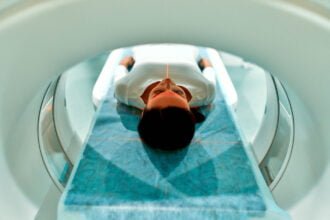The question “would you recommend us to a friend?” has become ubiquitous. Across industries, including healthcare, businesses ask this question to capture a simple metric. called the Net Promoter Score℠, which measures how actively your best advocates would speak for you.1 For medical practices and hospitals, it offers a simple way to gauge sentiment about the patient experience.
The question “would you recommend us to a friend?” has become ubiquitous. Across industries, including healthcare, businesses ask this question to capture a simple metric. called the Net Promoter Score℠, which measures how actively your best advocates would speak for you.1 For medical practices and hospitals, it offers a simple way to gauge sentiment about the patient experience.
But despite its familiarity, the Net Promoter metric amounts to little if providers fail to use it to learn about the factors that erode patient experience and thereby find ways to deliver better care. Net Promoter thought leaders Fred Reichheld and Rob Markey of Bain & Company have long advocated for a full Net Promoter System, in which organizations close the feedback loop by analyzing and addressing the root causes of low advocacy. For healthcare providers, care teams can adapt the mechanism of the huddle to do just that.
A huddle, also a common practice among care teams, consists in a short, daily meeting where a small team reviews its roster of patients to create an action plan for what each patient needs. More and more providers are using huddles to streamline care and adjust for already-stretched capacity.2 Huddles, as it happens, also are used by teams in loyalty-centric organizations.
Use Daily Huddles To Boost Patient Experience As Well As Care
As Rob Markey describes customer huddles in a recent brief, they “identify challenges or opportunities that have arisen based on customer feedback. Team members explore the issues, figure out what they can do about those issues in their own teams and determine whether they need help from others in the organization.”3
Here’s how you can use this practice among your own care teams:
- Appoint a “patient experience huddle master” to coordinate regular (no less than monthly) additional huddles focused on reviewing recent responses to the question “would you recommend?” This assumes that you are already asking “why” when your patients respond to the question.
- Have the patient experience huddle master highlight no more than three actionable root causes for discussion in a 30-minute session. For example, “I don’t like my doctor” may not be actionable, but “the desk clerk was rude to me when I checked in” is something you can address.
- Focus on solutions, not blame. Perhaps a change in workflow could alleviate office stress and allow more emotional bandwidth for welcoming patients, or perhaps clinical staff could rethink their protocols for pre-consultation screening questions. The possibilities are vast, which is why your huddles should include people from multiple functions to achieve maximal perspective.
- Appoint a single champion for leading each improvement. The champion’s job level should not matter. He or she should act as an enabler of change, making sure the specifics of the change to the patient experience are clear, and that everyone involved in adopting that change can do so.
- Reassure all staff, clinical and administrative, that huddles are a safe space where they can identify causes and propose solutions without negative repercussions. As you implement the huddle process, you can disseminate clear rules of engagement that help people participate confidently and grow professionally as a result.
- From the C-level onwards, make sure people advocate the message that your organization is committed to trust and to learning at all levels. Talk the talk with regular executive communications that feature successes at the team level and transparency about organization-wide changes to patient experience metrics. If you use huddles effectively, that news is very likely to be good.
- Create incentives, from recognition campaigns to small bonuses, which show that you also have committed to walk the walk. You may find that as a result you increase not only patient experience but staff and physician engagement, as well.
Patient experience huddles allow you to meld two powerful techniques that improve care deliver and patient satisfaction, and as a result, forge stronger bonds with your patients. In a world of increasingly aggressive patient acquisition efforts, and where retail clinics are eager to snap up unhappy patients at the margins, the benefits to your organization have gone well beyond a mere “nice to have.”
References:
1. Measuring your Net Promoter Score℠. Net Promoter System℠. http://www.netpromotersystem.com/about/measuring-your-net-promoter-score.aspx. Accessed August 07, 2015.
2. Healthy Huddles. University of California, San Francisco Center For Excellence In Primary Care. http://cepc.ucsf.edu/healthy-huddles. Accessed August 12, 2015.
3. Markey R., Huddle Up! Bain & Company. http://www.bain.com/publications/articles/huddle-up.aspx. August 03, 2015. Accessed August 11, 2015.
The post Huddle for Excellence In Healthcare Delivery appeared first on Syncresis.






